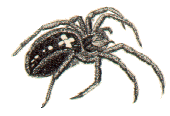 | Pajek datasets
from the book
|
Generalized Blockmodeling
Patrick Doreian, Vladimir Batagelj, Anuška Ferligoj
Dunbar and Dunbar (1975): Gelada baboons H22a, H22b networks
Dataset Baboons
Description
H22A.mat: first network data (12 baboons),
values of lines - frequency of grooming.
H22Abin.mat: first network data - binary matrix.
H22Agen.clu: first network data - gender partition.
H22B.mat: second network data (14 baboons),
values of lines - frequency of grooming.
H22Bbin.mat: second network data - binary matrix.
H22Bgen.clu: second network data - gender partition.
Baboons.paj: Pajek project file with data listed
above.
Download
complete dataset (PAJ)
Background
These networks are taken from Dunbar R. and Dunbar P. (1975).
Although the original data (H22A and H22B) were valued, we considered
in the book GBM only the binarized versions (H22Abin and H22Bbin).
The first matrix (H22A) is for a point of time and features 12 baboons.
Seven are female (f1 through f7) and
the five males are m1 through m5.
Two baboons (f8 and m6) were introduced to the group
(matrix H22B)
and were accepted by the group.
In the book GBM we considered the structure at both time points and
looked if the structure changes with the introduction of two new members.
Codes in names:
F(emale), M(ale);
D(ominant), L(eader), F(ollower), N(ewcomer).
References
- Dunbar R., Dunbar P.: Social dynamics of Gelada baboons.
Contributions to Primatology 6(1975), 1-157.
- Stephenson K., Zelen M.: Rethinking centrality.
Social Networks 11(1989), 1-37.
History
- Transformed in Stran format by V. Batagelj, 21. Feb 1993.
- Transformed in Pajek format by V. Batagelj
- Prepared for GBM dataset by V. Batagelj, 6. January 2007.
2. February 2007 -
Pajek datasets /
GBM
|